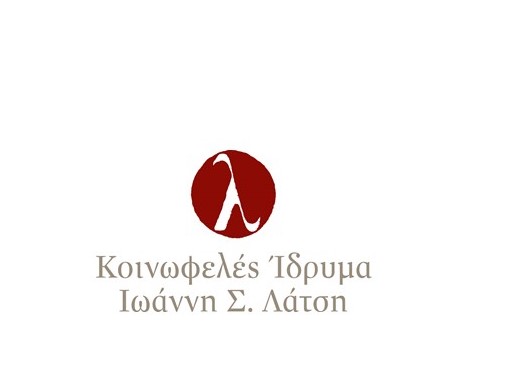
Interview: John S. Latsis Public Benefit Foundation
The John S. Latsis Public Benefit Foundation is a non-profit organisation established in 2005 to continue the benevolent legacy of John S. Latsis.
The Foundation plans, manages, and funds programs that cover a broad range of fields, such as education, science, arts and culture, social welfare and community development, in collaboration with civil society partners and key players within these areas.
Mrs Eva Lianou, Programs Coordinator at the John S. Latsis Public Benefit Foundation answers to HIGGS’s questions concerning the funding to Non-Profit Organizations.
1. If an NGO is interested in applying for grants to the John S. Latsis Public Benefit Foundation, what advice would you give to the organization?
First of all organizations should visit our website in order to have an idea on the initiatives we fund. Also, our Facebook page has up-to-date information on the entities we have already supported, as well as recent developments on our ongoing projects and annual programs. The application form which is available on our website outlines the exact details of “what we are looking for” to an applicant. Briefly, initiatives responding to current social needs, which promote cooperation between civil society actors, which are well-designed and demonstrate high levels of know-how as well as effective commitment of the staff and volunteers to achieving the organization’s objectives, are ranked at the top in our list. It should be pointed out that it is important for each organization to capture in its application the elements of the “authenticity” and originality of its work and not to adapt its application to match the actions of other NGOs we have funded in the past, as all the candidates who successfully pass the stage of the preliminary evaluation will then be invited to attend the interview stage, which aims to ensure that candidates can communicate in a convincing and effective way their vision, ideas and goals.
2. On your website, you mention, among other things, that a proposal will be evaluated on the sustainability of the proposed action. Could you please tell us what does “sustainability” mean for you?
For us, the notion of sustainability of an NGO and its work is linked to the concept of Sustainable Development, as defined by the UN Brundtland Commission: “Sustainable development refers to development that meets the needs of the present without compromising the ability of future generations to meet their own needs.” We want to see organizations (and grant proposals) that have a clear action plan not only for the period of the project implementation but also beyond this. We want to see what each entity expects in relation to its staff, revenue, assessment of its social impact or its internal evaluations. In a few words, sustainability for us is: predictability, preparation and continuous adjustment.
3. Which ones do you think are the main training needs of Greek NGOs nowdays?
We have seen innovative local organizations emerging in an extremely unfavorable socio-economic environment and other, larger-scale organizations that continue to operate with remarkable dedication and professionalism despite reductions in government and private funding and the social challenges. However, Greek NGOs need to improve the communication of their work and monitor the results of their action using reliable measurement and evaluation methods so that they can better inform the public and their donors about the social impact of their work. This will help them search for resources and achieve their goals.
4. From time to time the John S. Latsis Public Benefit Foundation has collaborated with other foundations that also fund and support the efforts of greek NGOs. Could you please inform us on the major benefits of this collaboration, for both foundations and organizations?
The projects we cofinance with other foundations are among the most creative and effective proposals we have funded until today and we are glad that this kind of initiatives keep increasing. In co-operation with other foundations, we have funded some ‘one-off’ projects, but we have also jointly designed and implemented projects on an annual basis. In addition, co-financing means that more people contribute with their views and experience to the stages of planning, evaluation and monitoring of a grant, therefore increasing the possibility of foreseing potential future challenges or solving obstacles that arise during the implementation of the project. As far as the programs are concerned, the burden of administrative management is shared, however the benefit lies mainly in the fact that brainstorming when designing the open call for a program or the contact with evaluators and communication with preselected candidates can be more creative and effective. At the same time, these co-financing initiatives are a powerful message to NGOs that cooperation is imperative and that they should cooperate as much as possible.
5. Do you allocate the total grant in the beginning, in the end or in installments?
The allocation of the grant depends on the funded project and its timetable. However, part of the grant is provided in the beginning in order for the applicant to start the implementation of the project and then the rest of the funding at the end of the project.
Please visit the website of the John S. Latsis Public Benefit Foundation here.
We are very grateful to Mrs Lianou and the John S. Latsis Public Benefit Foundation for this interview.

